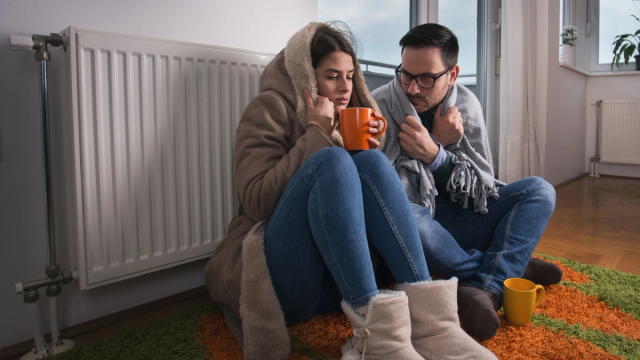HVAC Shoulder Season: How to Grow Your Business Year-Round
Re-engaging customers and building brand awareness during the shoulder season can help your HVAC business grow year-round.

COVID brought in a wave of HVAC replacements and upgrades while everyone was at home. But now, with the pandemic-induced increase behind us, industry leaders believe we’ve shifted into a repair market. Homeowners who recently replaced or upgraded their systems won’t need to replace them again for years, and homeowners who didn’t get replacements are more likely to choose repairs due to high HVAC prices.
For some contractors, this decline in replacements could mean peak-season profits haven’t provided as much cushion as they’d like to pad their slower shoulder-season months. If you’re in this boat, don’t panic: We’ve got a few strategies to help keep business flowing this shoulder season. Let’s look at some ways you can re-engage and acquire new customers.
Re-Engage Existing Customers with Follow Up Calls
Customer retention is key to growing your HVAC business year-round, especially in a repair market. These customers already know your business and trust your brand. But they also have different levels of engagement with your business. Re-engaging customers who don’t receive regular service can help increase your profits and requires less work than acquiring new customers. Here are some ways to re-engage your HVAC customers, starting with your most recent touchpoints.
Follow Up With Your Customers From Busy Season
You hopefully saw a lot of customers during busy season. The downside of being so busy, though, is you probably don’t get to connect with customers the same way you would when things are slow. These customers are likely stressed and hot from their A/C not working, so your goal is to fix their issue as quickly as possible and head on to the next job. Now that it’s slowed down, you have more time to connect.
Follow up with these customers during shoulder season to see how things are going. Are they happy with how their new or repaired system is performing? Is there anything they wanted to address that wasn’t a priority before? Or maybe they’re interested in a service contract to help prevent an emergency from happening again? Taking time to ask your customers follow-up questions after their appointments can help improve their experience and create repeat customers, even if they don’t schedule again right away.
Follow Up With Other Active Customers
After you’ve followed up with your most recent customers, reach out to customers who have received services in the past year or two. These customers may need a tune-up or are ready to upgrade their system but haven’t had the time to call (or simply forgot to). Reaching out to them will help bring it to the top of their mind and hopefully bring in some new business.
If you use the good-better-best pricing strategy, this is also a great opportunity to revisit the options you didn’t close during the initial visit. Before making follow-up calls, review their file and refresh yourself on what they had serviced last time. If they chose the “good” or “better” option, ask how things are going and if they’re ready to upgrade to the “better” or “best” option. They may have had a change in finances and are ready to try the new option, or they may still hold off with the current economy, but your services will be fresh in their minds.
If they chose the “best” option, see how things are going, if you can do anything else for them, and ask them to leave a review and refer their friends and family. You can also offer other services, like service contracts, to all of your customers so they don’t have to worry about calling to schedule a tune-up in the future; they’ll automatically be on your books.
Follow Up With Inactive Customers
If you still have time after following up with your active customers, take some time to reach out to inactive customers. These are customers you haven’t seen in years but still have on file. These customers may not have scheduled in years because they haven’t needed to or decided to go with a different company.
Take note of customers with older equipment to see if they’re ready for a mid-life refresh or a new HVAC system, and ask more recent customers if they’re ready for a tune-up. Be prepared for any answer. Some customers may be ready to schedule, some may not need to schedule now, and some may have gone with a different company. If they went with a different company, ask for feedback so you can try to implement it into your business and hopefully prevent losing another customer.
You can follow up with these customers by phone, but don’t be afraid to send them emails, too, especially if they don’t answer. If it’s been a while, they may not have your number saved in their contacts.
Get More HVAC Customers by Building Brand Awareness
Retaining and re-engaging customers may be more profitable than acquiring new customers, but you need to acquire customers to retain them. It may take longer to make meaningful connections with leads than existing customers because they’re likely unfamiliar with your brand or services. Let’s look at some ways you can work on building brand awareness during shoulder season so you can get more leads and, eventually, more HVAC customers.
Take Advantage of Customer Referrals and Networking
Customer referrals and networking are tried-and-true methods for gaining new customers, especially if you don’t have much time or money to invest in marketing. A recent survey found that 77% of homeowners find contractors through word of mouth.
To increase your customer referrals, consider starting a customer referral program. Reward loyal customers who refer others to your business with rewards, such as 10% off their next service for each referral or a free tune-up if they refer five customers. Just a little something to say, “Thank you,” and encourage your customers to keep the referrals coming. If you turn the referral into a lifetime customer, it will pay for itself.
Referrals can come from sources other than customers, too. While you have downtime, connect with professionals in your area who work closely with homeowners, such as realtors or electricians. Realtors often work with new homeowners who need contractor recommendations, and electricians have a similar customer base, but their services don’t overlap with yours. You can return the favor after referrals by sending them a thank-you gift card and recommending their services to homeowners who ask you for referrals.
Market Your Services Online
Even though word of mouth has stood the test of time, marketing your HVAC services online is still essential. You may have heard the saying, “If you’re not online, you don’t exist,” which rings true for the new generations of millennial and Gen Z homeowners. These generations get their information online, and even if they learn of your business through word of mouth, they’ll probably still Google your business before reaching out.
The good news is, though, your online presence doesn’t have to be robust. A simple website, a Facebook page, and a Google My Business profile are often sufficient to establish credibility as long as you keep them up-to-date. These three online pages will help get your business name into search results, give your customers accurate information about your business, and offer a place for customers to leave reviews.
We recommend including your payment options, such as customer financing, wherever you advertise your business. Payment options could be a deciding factor for customers, and you don’t want to lose out because a competitor’s payment information is more accessible than yours.
Stay Busy During Shoulder Season
Shoulder season can be difficult to navigate in any market, but especially in a repair market. Customers aren’t always aware their HVAC system needs service until it’s too late — which is usually during the busy season. However, using your downtime to re-engage your current customers and build brand awareness with potential customers should help keep you busy all year.
 Operational ExcellenceGet Your Business Ready for the New Year: Work Smarter, Not Harder
Operational ExcellenceGet Your Business Ready for the New Year: Work Smarter, Not Harder Operational ExcellenceHow to Turn Emergency Calls Into Loyal Customer Relationships
Operational ExcellenceHow to Turn Emergency Calls Into Loyal Customer Relationships Sales StrategyUsing Seasonal Specials to Boost Your HVAC Business Year-Round
Sales StrategyUsing Seasonal Specials to Boost Your HVAC Business Year-Round